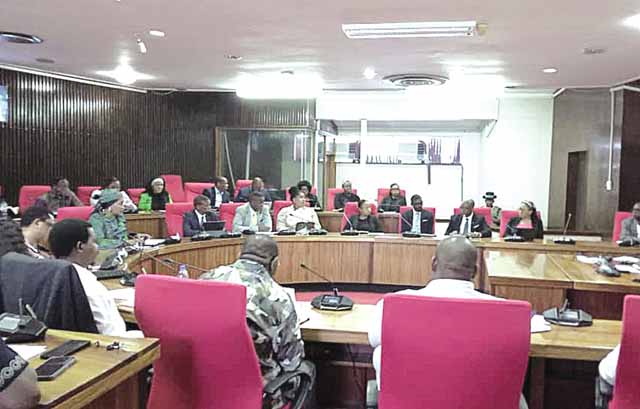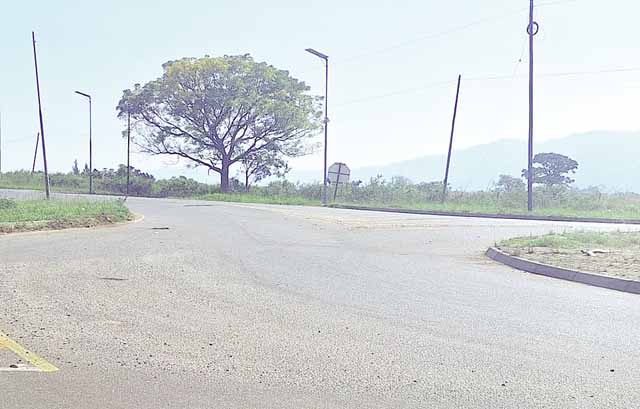By Siphesihle Nkwanyana | 2021-10-16
LAST week saw the SADC region hold a virtual senior officials meeting under the theme: Rolling out Global AIDS Strategy 2021-2026, and the UN Political Declaration’s 2025 Commitments in the SADC region. However, one of the main objectives was for member states to update each other on the state of HIV in the context of the COVID-19 pandemic in the SADC region.
Eswatini was part of this meeting, and made a presentation on some of the strategies that worked in attaining remarkable results before the global target of 2030. One of the areas of focus was the issue of strengthening Primary HIV Prevention, as well as Paediatric and Adolescent Treatment coverage.
Eswatini reported recording significant progress in both HIV Prevention and Treatment, including paediatric treatment coverage, placing it among the top achievers both in the SADC region and in the world. The country further reported critical success factors that explain the commendable progress in primary prevention of HIV such as expanded communication campaigns (above and below the line). change These increased knowledge and influenced change in behaviour, with communication based on the Risk Reduction Module which is centred around risk profiling and adopting safe practices.
Other success factors include increased treatment coverage (above 95 per cent) - focused on treatment adherence which increases viral load suppression (above 95 per cent), reducing the likelihood of HIV transmission.
The overall aim of the Global AIDS Strategy 2021-2026 is to get every country and every community on track to end AIDS as a public health threat by 2030. The strategy was adopted by the UNAIDS Programme Coordinating Board (PCB) during a special session, chaired by the Minister of Health of Namibia, held on 24 and 25 March 2021. The Global AIDS Strategy 2021-2026, End Inequalities, End AIDS, uses an inequalities lens to close the gaps preventing progress to end AIDS and sets out bold new targets and polices to be reached by 2025 to propel new energy and commitment to ending AIDS.
The UNAIDS Secretariat and its 11 Cosponsors worked to develop the new strategy, which received inputs from more than 10 000 stakeholders from 160 countries. “This year marks 40 years since the first cases of AIDS were reported and 25 years since the establishment of UNAIDS. We are at a critical moment in our historic effort to end AIDS," said Winnie Byanyima, Executive Director of UNAIDS. "Like HIV before it, COVID-19 has shown that inequality kills. COVID-19 has widened existing inequalities that block progress to ending AIDS.
“That's why I'm proud that our new strategy places tackling inequalities at its heart. We must seize this moment to ensure health equality for all in order to beat COVID-19 and end AIDS." The strategy puts people at the centre and aims to unite all countries, communities and partners across and beyond the HIV response to take prioritised action to transform health and life outcomes for people living with and affected by HIV.
The three strategic priorities are to: (1) maximise equitable and equal access to comprehensive people-centred HIV services; (2) break down legal and societal barriers to achieving HIV outcomes; and (3) fully resource and sustain HIV responses and integrate them into systems for health, social protection and humanitarian settings.
"The World Health Organisation is pleased to endorse the global AIDS strategy for the next five years, with its ambitious vision for ending gender inequalities and realising human rights, including the right to health, calling upon all partners and stakeholders in the HIV response in every country to transform unequal gender norms and end stigma and discrimination," said Tedros Adhanom Ghebreyesus, Director-General of the World Health Organisation and chair of the UNAIDS Committee of Cosponsoring Organisations.
"For this strategy to be fully realized, WHO will continue to support all countries to strengthen health systems and especially primary health care, on the road towards universal health coverage." If the targets and commitments in the strategy are achieved, the number of people who newly acquire HIV will decrease from 1.7 million in 2019 to less than 370 000 by 2025 and the number of people dying from AIDS-related illnesses will decrease from 690 000 in 2019 to less than 250 000 in 2025.
The goal of eliminating new HIV infections among children will see the number of new HIV infections drop from 150 000 in 2019 to less than 22 000 in 2025. "I applaud the joint efforts in the global AIDS response. At this critical point in efforts to end AIDS as a global health threat by 2030, I call on all countries to support this strategy to get the global AIDS response back on track," said Kalumbi Shangula, Minister of Health of Namibia and PCB Chair.
HIV prevention for key and priority populations receives unprecedented urgency and focus in the strategy, which calls on countries to utilise the full potential of HIV prevention tools, especially for adolescent girls and young women in sub-Saharan Africa, sex workers, people who inject drugs, gay men and other men who have sex with men, transgender people and people in prison settings. strategy "The Global Network of People Living with HIV (GNP+) fully supports the Global AIDS Strategy 2021-2026.
The strategy's life-saving framework for ending inequalities is fundamental to ending the AIDS epidemic and achieving the Sustainable Development Goals," said Alexandra Volgina, Programme Manager, GNP+. The strategy is based on human rights, gender equality and dignity, free from stigma and discrimination for all people living with and affected by HIV, and is the result of extensive analysis of HIV data and an inclusive process of consultation with countries, communities and partners.
Achieving the goals and targets of the new strategy will require annual HIV investments in low- and middle-income countries to rise to a peak of US$29 billion by 2025. The total resource needs for lower-income- and lower-middle-income countries is around US$ 13.7 billion. Donor resources are mainly needed for low-income and lower-middle-income countries, while in upper-middle-income countries, which account for 53 per cent of the investments needed, domestic resources are the predominant source of funding.
What does the strategy mean for Eswatini With the many achievements Eswatini has attained in the HIV response, most notable is providing treatment for People Living with HIV mainly through domestic resources, and maintaining this commitment despite the fiscal challenges facing Government. This in itself is investment in the people and is addressing the basic human rights of Emaswati.
The fragile gains achieved in the HIV and AIDS response can be easily reversed if the vulnerable groups, being key populations, adolescents and young men and women are not placed at the centre of the response. There is strong evidence that investment in people; like health care, education and social protection, are not just good for the individuals who directly benefit, but are also good for the country’s growth and political stability.
share story
Post Your Comments Below
ATHLETICS - A true marathon indeed!
The High court has issued an order to Athletics Eswatini...
On Saturday One Billion Rising Eswatini held a mountain circle hike in partnership with the Proje...

CHIEFS in areas impacted by the Mkhondvo/Ngwavuma water augmentation programme phase 1B have aske...

A 16-year-old vendor was fatally stabbed by a 14-year-old in an incident that highlights social a...
All material © Swazi Observer. Material may not be published or reproduced in any form without prior written permission.
Design by Real Image Internet